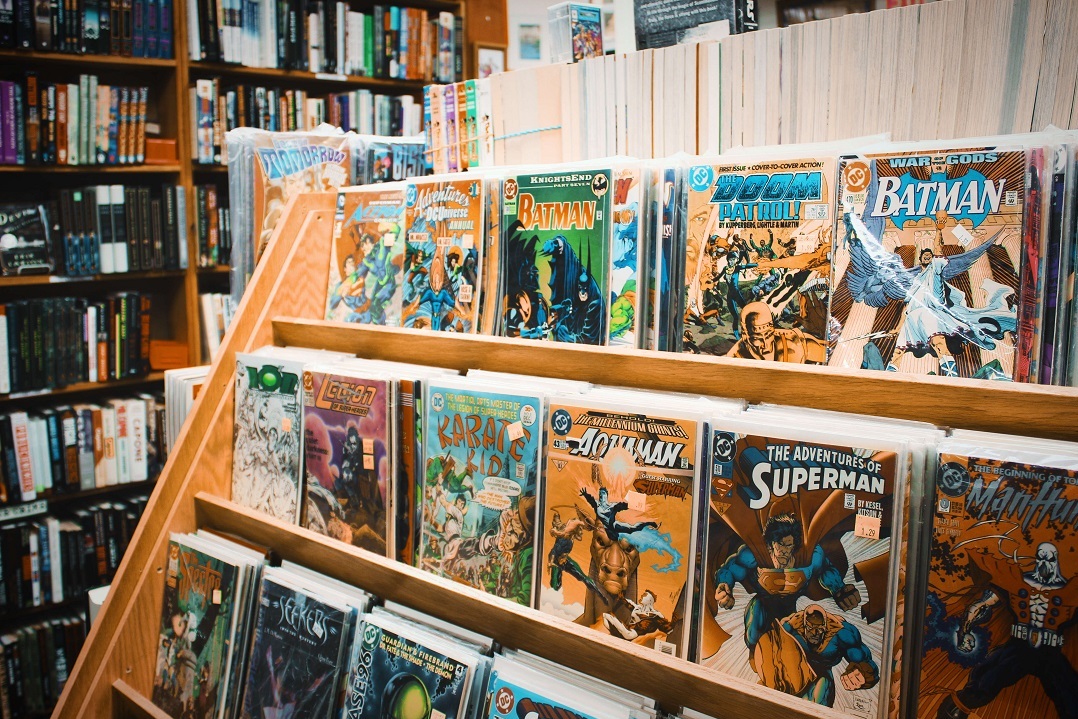Content Creation
What the Rising Popularity of Graphic Novels Can Tell Us About Mixed Media Content
By Kyle Harper on October 5, 2018
For many of us, comics were a crucial part of our childhoods. Whether we were following the exploits of a favorite superhero, creeping ourselves out with ghostly serials, or just keeping up with the antics of the gang at Riverdale High, the punchy dialogue and bright color contrast provided a welcome escape from bulky novels.
Today, those paneled pages are making a huge comeback. Many superheroes are now household names thanks to flourishing film enterprises. Marketing graphic novels is helping libraries hold onto screen-saturated younger audiences. And yes, even a number of brands have launched their own web comic series.
Why is this form making such a strong resurgence? And what can content marketers learn from the new developments we're seeing in the form?
Elements of the Modern Comic and Graphic Novel
The first step to diving into this question is to understand some of the inherent differences between a comic and a graphic novel. While very similar in form, there are slight deviations in format, content, and practice that offer important lessons for marketers.
At the most basic level, comics tend to be a bit more traditional. Stories are typically episodic in nature, following a long arc that's carried over a series of shorter issues. By comparison, graphic novels tend to be more self-contained. But beyond that, there's an enormous amount of crossover between these two formats in terms of style and content. Many comics and graphic novels feature fast action and the struggle between good versus evil. Other popular modern additions to each genre focus on complex character development and gray areas of political, social, or spiritual conflict. The key is noticing that the form doesn't really dictate what the author has to say-they're just two tools, two formats, that fit different needs.
Both mediums tell stories through a cohesive style that is both written and visual-a simple idea that is quite difficult to execute. Worlds and characters are often designed with specific communities and readers in mind, giving rise to a wide diversity of tailored content that is sensitive to pop culture and current events. All of this adds up to a unique blend of storytelling that engages readers on multiple levels.
Becoming a Graphic Brand
There are plenty of ways that marketers can take nods from the comic book form while making their own content. Some brands have leaned into this idea and found success in making their own comics. In fact, Google even made a sort of brand graphic novel to announce the launch of Chrome back in 2008.
Image attribution: Howard Lawrence B
Even so, mixed media visual content frequently requires greater time and resources, never mind sourcing a very specific creative talent that the average marketing team is unlikely to have in-house.
Never fear! Even if comic form itself doesn't exactly work for your brand at this time, there are a number of principles that you can take from the format to elevate your content marketing.
Cohesive Visual Storytelling
Content marketers know that visual content is important. It's more attention grabbing to the eye, adds diversity to your content hub, and generates an SEO boost. Yet often we see cases where writing and visuals don't work together in service to the content. A common example is when a brand produces an infographic, and then "introduces" it with a blog-if the blog's writing doesn't add anything to the primarily compelling visual, it's just garnish.
Instead of reiterating the same subjects in different styles, think of creative ways to make your writing and visual content support each other so that the cohesive whole is greater than just the sum of the two separate elements.
Serve Hyper-Specific Audiences
Every content hub has at least a handful of pieces that are meant to serve general interest and information. This is a good thing, and healthy for your site. But at the same time, your brand shouldn't shy away from creating content for extremely specific segments of your audience. Comics and graphic novels are able to garner fanatic followings by serving up stories that are tailored to the interests and experiences of a specific audience.
Content with mass appeal might grant you reach, but it won't bring audiences back to your brand regularly. Providing unique experiences that specifically serve your readers, however, is a fantastic way to establish lasting engagement.
Think Long and Short
Comics and graphic novels primarily differentiate themselves based on the length and composition of their format. In the same way, you should think about how your brand narrative is best told. Should you lean into an episodic format that's short, punchy, and spread across a large volume of pages? Or is your brand better served by a handful of long, deeply explored pieces that hold onto the reader for an extended period of time? Diversify your reader's experience with white papers, interactive presentations, or video content that demands different types of interactions from visitors.
Experiment and invest in a blend of long- and short-form content. This not only helps you meet the needs of audiences looking for different styles of content experience, it also forces your content team to learn how to express your brand story in a variety of ways.
Image attribution: Lena Rose
Visual storytelling has captivated people for centuries through thousands of different forms and media. Comics and graphic novels are a modern form that fits perfectly with our fast-paced, digitally present age. Whether you try to find your brand's own paneled style or just take nods from the form, there is absolutely a lesson in engagement to be learned for your content marketing.
For more stories like this, subscribe to the Content Standard newsletter.
Featured image attribution: Muhd Asyraaf




